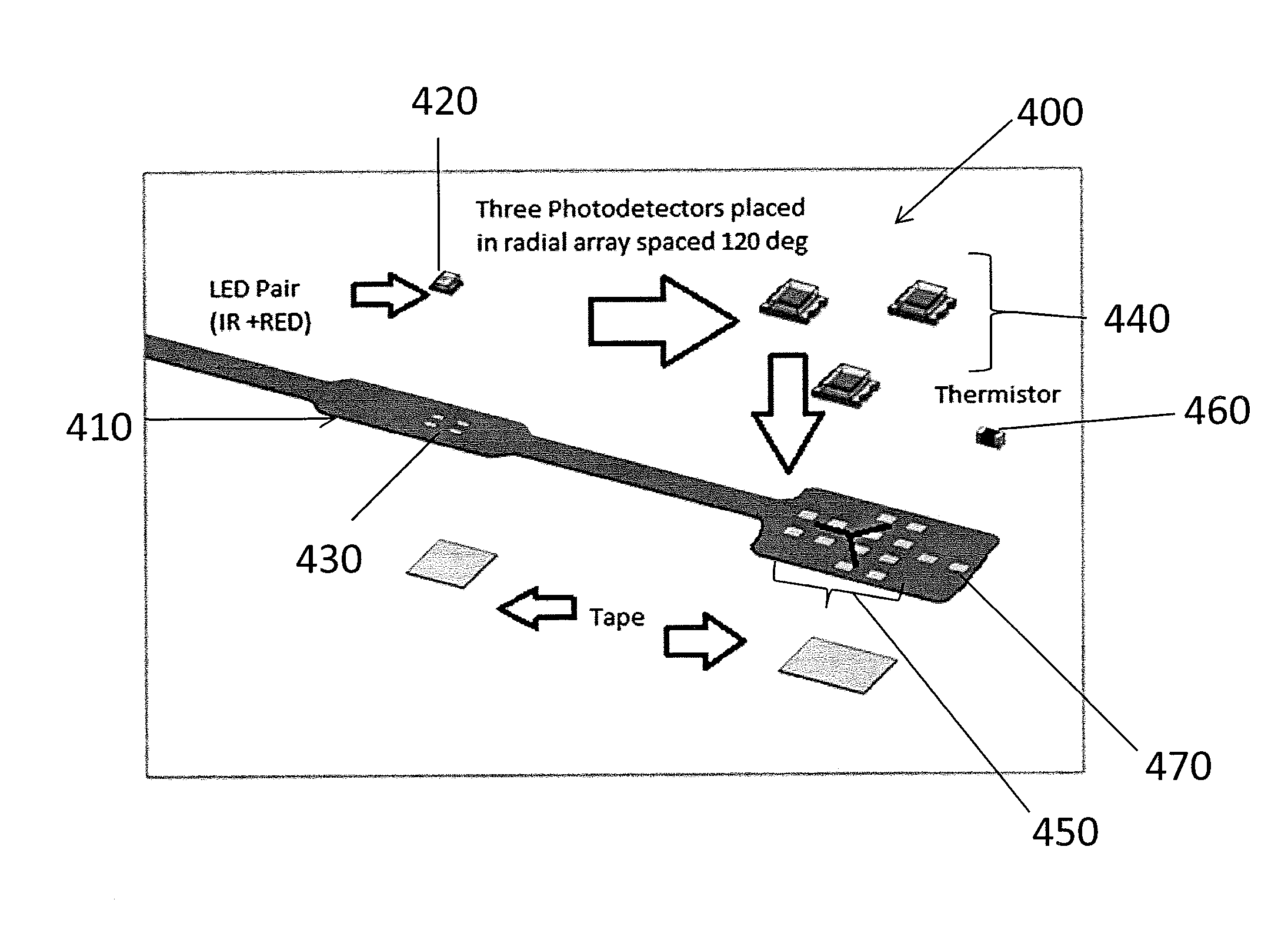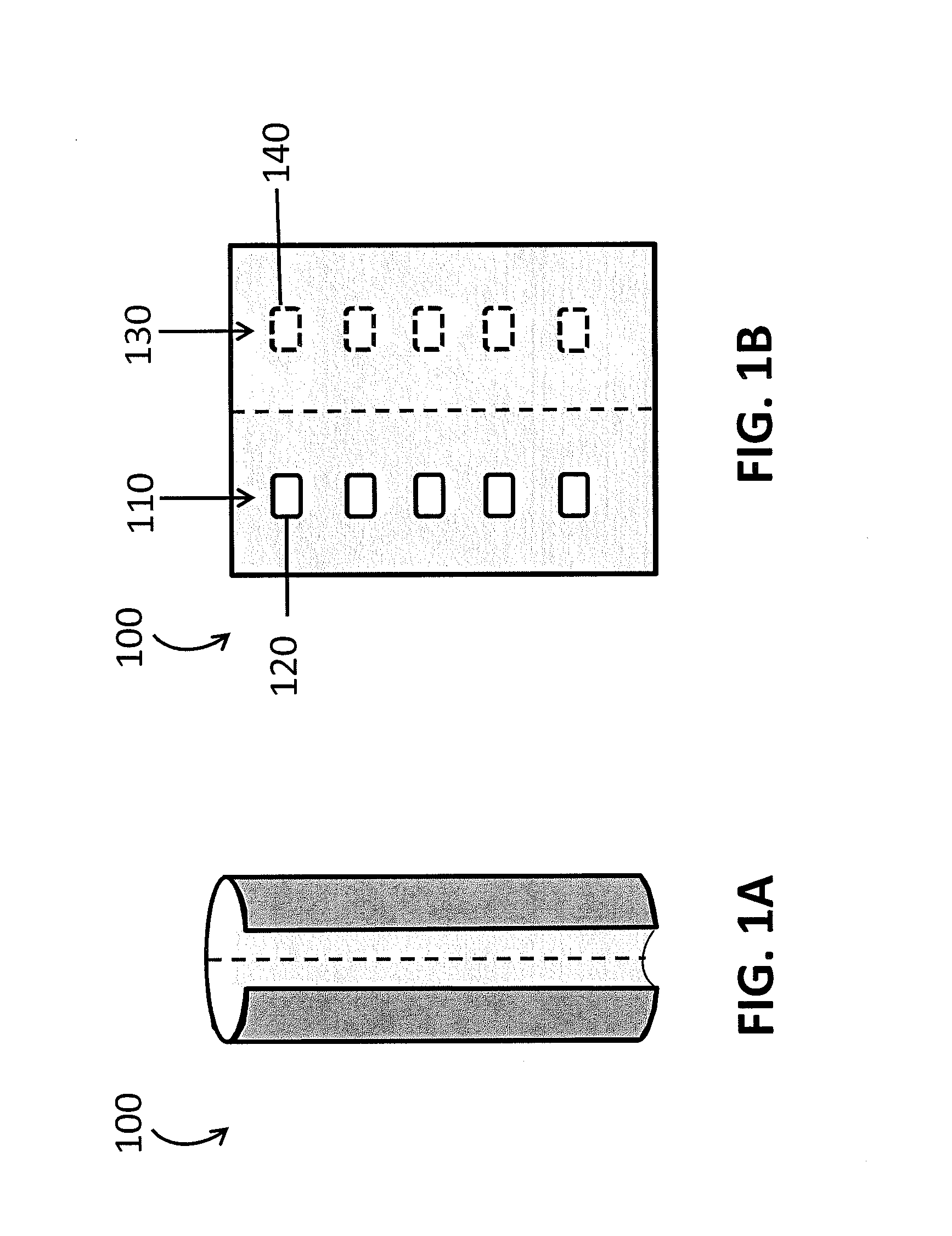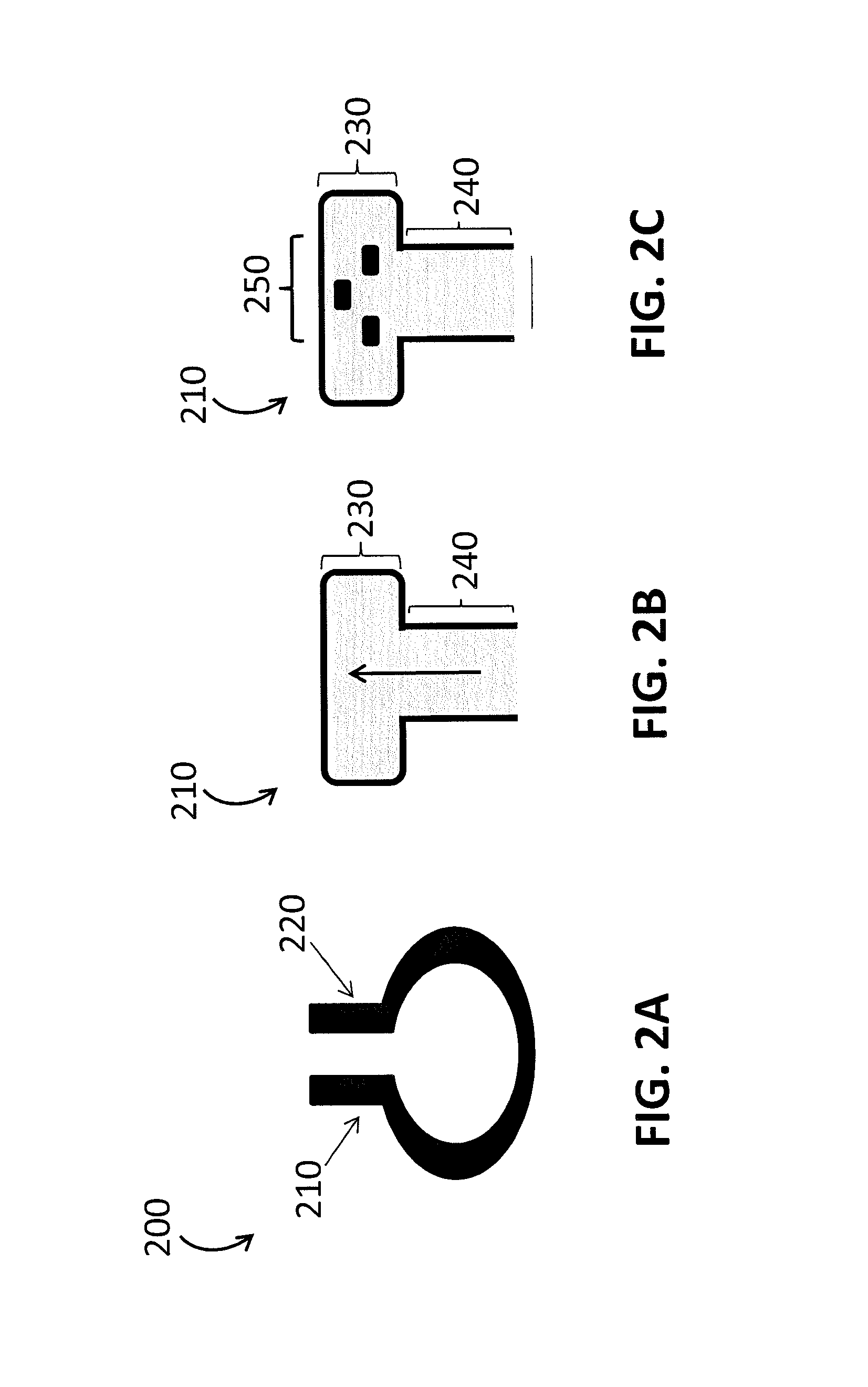Devices and Methods for Monitoring Directional Blood Flow and Pulse Wave Velocity with Photoplethysmography
a technology of directional blood flow and pulse wave velocity, applied in the field of biological sensors, can solve the problem of significant untapped potential in using ppg to monitor physiological processes
- Summary
- Abstract
- Description
- Claims
- Application Information
AI Technical Summary
Benefits of technology
Problems solved by technology
Method used
Image
Examples
example 1
Evaluation of Skin Flaps
[0062]In some embodiments of the invention, the sensors, systems and methods described herein could also be used to evaluate the status of various skin flaps that are used to cover defects created during surgical procedures (e.g., head and neck cancers). Adequate blood perfusion is needed for the tissue to properly heal and survive. Pulse oximetry has been suggested as a means to determine the blood flow and viability of a flap by measuring oxygen saturation of the tissue. However, traditional pulse oximetry can only confirm blood is arriving to a site, whereas the present invention can more specifically determine where the blood supply is coming from and where it is going in order to determine if perfusion of the skin flap is viable or further intervention is needed.
[0063]For example, a sensor may be placed on or near a skin flap region, such as on the pedicle attaching blood vessels and nerves to the flap. If more than a single blood vessel perfuses the ski...
example 2
Evaluation of Cerebral Blood Flow
[0064]In some embodiments of the invention, the sensors, systems and methods described herein may be used to evaluate the adequacy of cerebral blood flow. The human nose is the only “external” organ (accessible non-invasively) supplied by two separate branches of the common carotid artery (a dual blood supply). The nose is supplied by the facial artery (a portion of the last branch of the external carotid artery) and the ophthalmic artery (originating from the first branch of the internal carotid artery). These arteries form a rich blood supply to the nose which is recognized to have multiple anastomoses between the facial and ophthalmic arteries on one side of the nose (intercarotid anastomoses) and also between these same vessels on the contralateral side of the nose (transfacial anastomoses). These vessels also form plexes on both the nasal septum and the lateral portions of the nose. This rich blood supply and the lack of intrinsic sympathetic in...
example 3
Laminar or Turbulent Flow in an Artery
[0071]In some embodiments of the invention, the sensors, systems and methods described herein are used to determine whether there is laminar or turbulent flow in an artery. Laminar flow may indicate a lack of atherosclerosis, while turbulent flow may indicate its presence. The instant invention by means described below could be used to detect the type of flow pattern using either transmission or reflectance PPG and can be used to evaluate peripheral (superficial arteries) such as the brachial, carotid, femoral and others for turbulence before and after surgical procedures and to evaluate the patency of shunts such as shunts placed in the arms for renal dialysis and implanted shunts along segments of arteries such as for aneurysms particularly of the aorta. The directional blood flow sensors and methods described herein may be used to determine from which direction the blood is flowing, and the laminar blood flow may alter the phase differences i...
PUM
 Login to View More
Login to View More Abstract
Description
Claims
Application Information
 Login to View More
Login to View More - R&D
- Intellectual Property
- Life Sciences
- Materials
- Tech Scout
- Unparalleled Data Quality
- Higher Quality Content
- 60% Fewer Hallucinations
Browse by: Latest US Patents, China's latest patents, Technical Efficacy Thesaurus, Application Domain, Technology Topic, Popular Technical Reports.
© 2025 PatSnap. All rights reserved.Legal|Privacy policy|Modern Slavery Act Transparency Statement|Sitemap|About US| Contact US: help@patsnap.com



